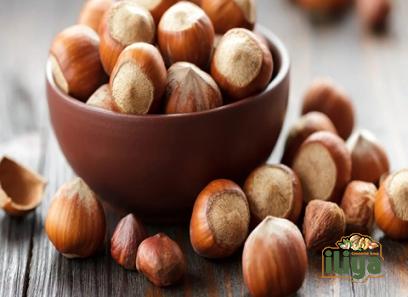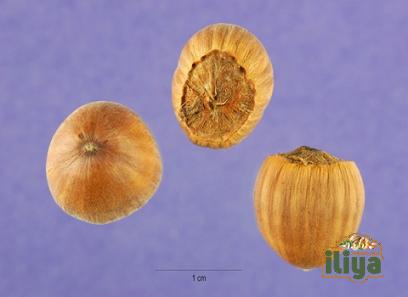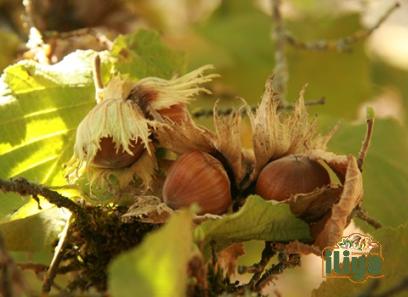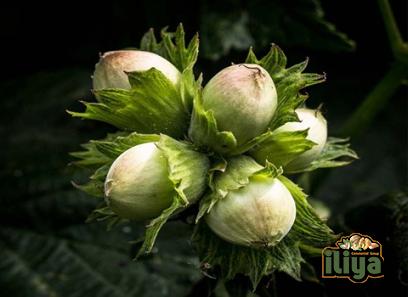Beaked hazelnut, also known as Corylus cornute, is a fascinating nut-bearing shrub that belongs to the Betulaceae family.
This intriguing plant is native to North America and has been integral to indigenous cultures for centuries.
From its distinctive appearance to its versatile uses, beaked hazelnut holds a special place in the botanical world.
In this article, we will delve into the depths of knowledge surrounding beaked hazelnut, uncovering their features, benefits, and cultivation methods.
Join us on this educative journey as we explore the captivating world of beaked hazelnut.

.
 Beaked Hazelnut
Beaked Hazelnut
A Diverse Nut for Culinary Delights Beaked hazelnut, or Corylus cornute, is a species of hazelnut that can be found throughout North America.
These small, spherical or oval-shaped nuts range from 15 to 25 mm in length and 10 to 15 mm in diameter.
The outer shell of beaked hazelnut is fibrous and encloses a single, tasty kernel.
The flavor profile of beaked hazelnut is quite distinct, with a rich, nutty taste that is both sweet and savory.
These nuts have been utilized for centuries by indigenous cultures for their culinary applications.
From roasted snacks to delectable desserts, beaked hazelnuts add a unique twist to various dishes.
Features and Growth Characteristics of Beaked Hazelnut
Shrub Appearance and Identification Beaked hazelnut is a deciduous shrub that can grow to be 3 to 15 feet tall.
Its multi-stemmed growth habit gives it a dense and bushy appearance.
The leaves of the beaked hazelnut are broad, elliptical in shape, and sharp-toothed.
One of the defining features of the beaked hazelnut is its distinctive male catkins and female flowers.
The male catkins are long, cylindrical clusters that hang down from the branches, while the female flowers are small and inconspicuous, situated near the tips of the branches.
These unique attributes make beaked hazelnut easy to identify in the wild.
Adaptability and Distribution Beaked hazelnut is a resilient plant that can thrive in a variety of environments.
It is predominantly found in North American regions with moist, well-drained soils, such as woodlands, stream banks, and slopes.
This versatile shrub is hardy in USDA Hardiness Zones 3 to 7, making it suitable for cultivation in a wide range of climates.
.
 Nutritional and Medicinal Benefits of Beaked Hazelnut
Nutritional and Medicinal Benefits of Beaked Hazelnut
Rich in Essential Nutrients Beaked hazelnuts are a nutritional powerhouse, packed with essential vitamins and minerals.
Just a handful of these nuts provide good dietary fiber, protein, healthy fats, and antioxidants.
They are also rich in vitamin E, strengthening the immune system and promoting healthy skin.
These nutritious nuts also harbor minerals such as calcium, magnesium, and potassium, which contribute to bone health and aid in regulating blood pressure.
Including beaked hazelnuts in your diet can provide a well-rounded source of vital nutrients.
Potential Health Benefits Apart from nutritional value, beaked hazelnuts possess several potential health benefits.
The antioxidants present in these nuts help combat oxidative stress, reducing the risk of chronic diseases like heart disease and cancer.
Additionally, the high levels of monounsaturated fats in beaked hazelnuts can improve heart health by lowering LDL cholesterol levels.
Moreover, beaked hazelnuts contain phytochemicals such as flavonoids and phenolic compounds, which have been reported to possess anticancer properties.
While more research is needed, these potential health benefits are promising for integrating beaked hazelnuts into a balanced diet.
Culinary Uses of Beaked Hazelnut
Roasted Snacks and Desserts Beaked hazelnuts add a delightful crunch and flavor to roasted snack mixes.
Simply roast the nuts lightly in the oven until they turn golden brown, and you have a delicious, healthy snack.
These roasted hazelnuts can also be added to granola, and trail mix, or used as a topping on salads and yogurt.
In the realm of desserts, beaked hazelnuts are a popular addition to baked goods such as cookies, cakes, and pastries.
Their nutty flavor and crunchy texture provide a delectable contrast to sweet treats.
You can also use ground-beaked hazelnuts as a flour substitute for gluten-free baking or to enhance the flavor of pie crusts.
.
 By familiarizing yourself with beaked hazelnut and incorporating it into your life, whether through cultivation, consumption, or conservation efforts, you can join the collective journey of appreciating and preserving the wonders of nature.
By familiarizing yourself with beaked hazelnut and incorporating it into your life, whether through cultivation, consumption, or conservation efforts, you can join the collective journey of appreciating and preserving the wonders of nature.
Celebrate the beaked hazelnut’s beauty, taste its delectable flavors, and contribute to a more sustainable and biodiverse world.











Your comment submitted.